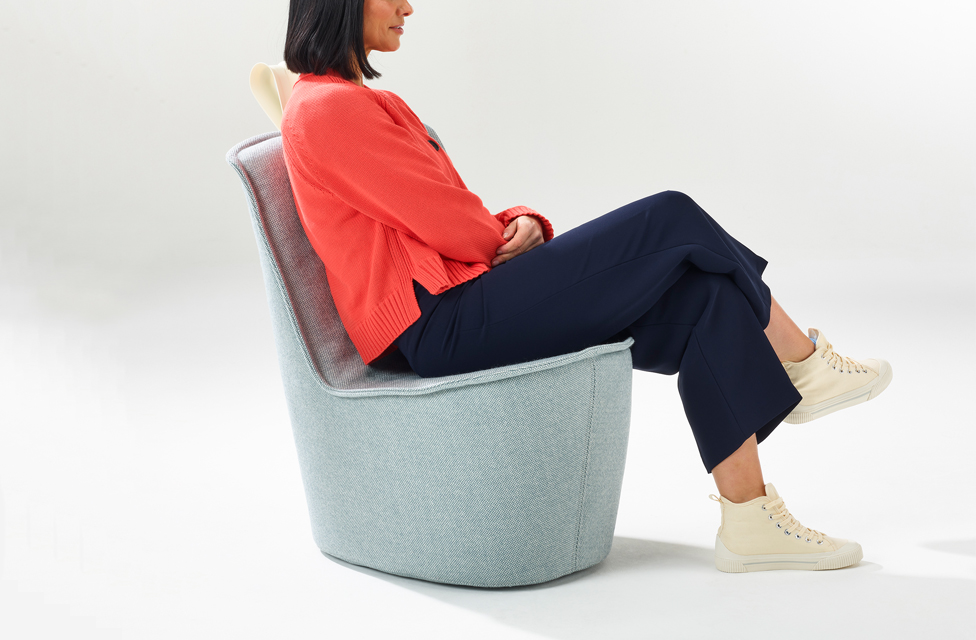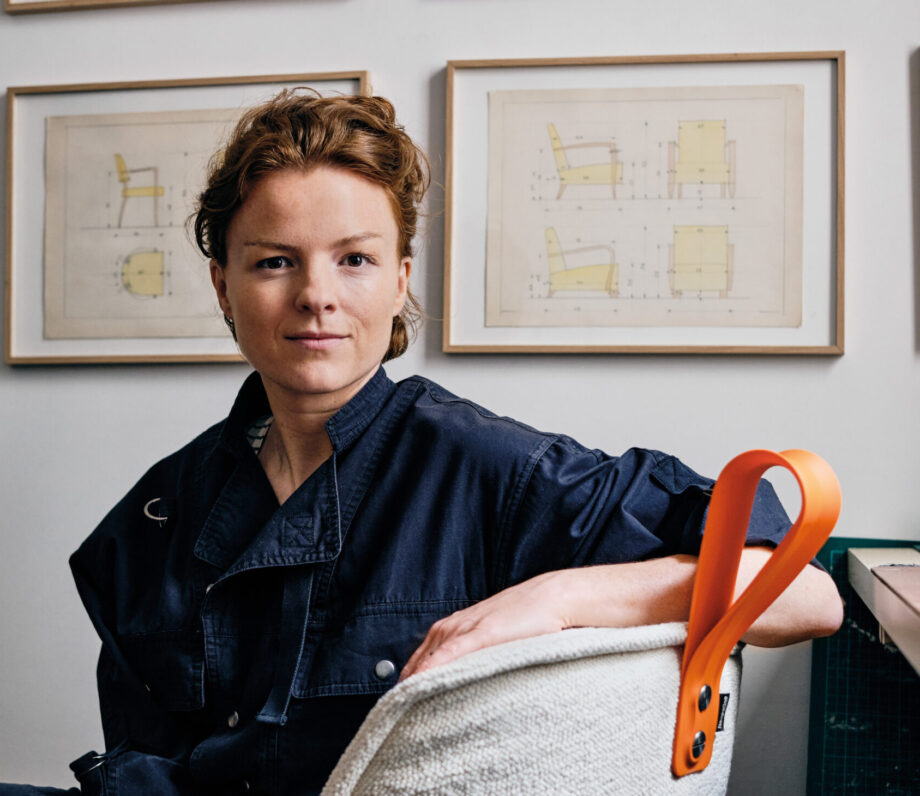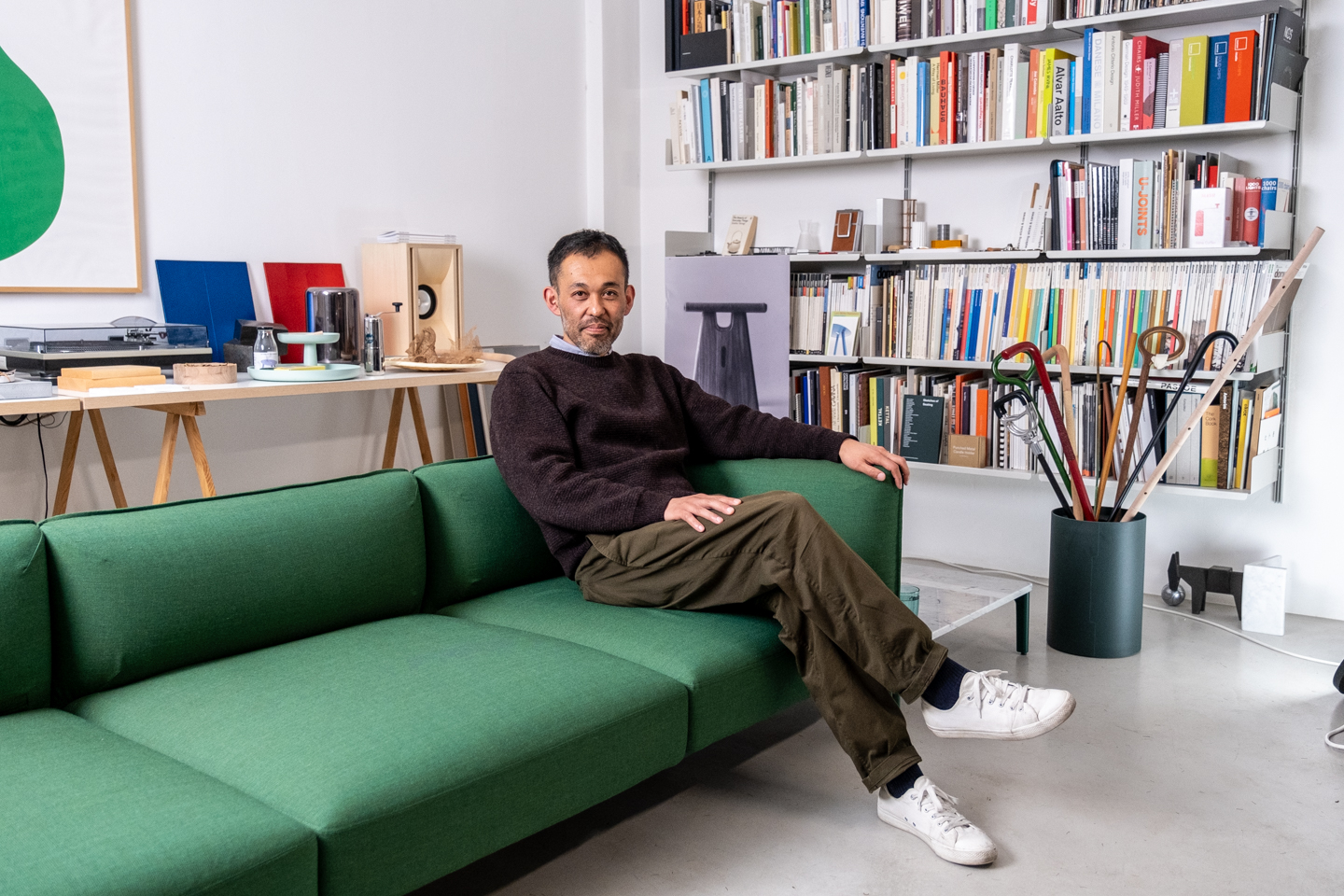Lucy Kurrein is an award-winning British furniture designer, specialising in upholstered seating. Her work combines the rigour of industrial manufacturing with an intuitive approach to form and reference to historical design. Lucy is dedicated to the tactility and behaviour of materials, and has established a reputation for designing furniture with a refined silhouette and soft feel. Lucy founded her independent design practice in 2013, after a decade working with leading designers and consultancies in London. From her studio in Paris, she collaborates with established, international furniture manufacturers on designs for the workplace and home.
Read on, then discover the Pippin chair here.

What was the starting point for Pippin?
I wanted the chair to be present and openhearted — something that feels ready to listen, ready to contribute. In today’s workplace, where collaboration often happens between people who don’t know each other well, comfort and ease are essential. The challenge was to create a lounge chair that moves easily, but still feels solid and grounding once you sit.
Often, agile furniture can feel temporary — like you’re only meant to perch. But I wanted Pippin to feel like a commitment, in a good way. The seat is deliberately low, encouraging people to settle in. The wheels stay active while seated, so the chair allows for gentle movement as conversations shift and evolve.
How would you describe the sit?
It’s relaxed and low, with a generous slope to the seat and backrest. You naturally fall into it, and it takes the weight off you straight away. I always try to design seating that cups the body, offering both physical and emotional comfort.
The back is wide and reclined, encouraging an open posture — something I think helps with communication and focus. It doesn’t have arms, so it’s easy to pivot from side to side. And the solid base helps keep the visual clutter to a minimum, especially when the chairs are grouped together.

What influenced the overall shape?
Despite its compact footprint, I wanted the chair to feel expansive when you’re sitting in it. The oval base is as small as it could be while staying stable, and it gently flares out toward the top to support the seat. It gives you just enough space to relax, without taking over the room. That balance of lightness and groundedness was really important.
Tell us about the strap handle—it’s quite a feature!
The handle was a big part of the story. It felt important to include a clear, graphic cue that says: you can move me. Chairs that look too solid or precious can make people hesitant to interact with them, and I didn’t want that.
I was inspired by the pull tab on a Dr. Martens boot — something functional but iconic. It’s instantly readable and intuitive to use. Practically, it guides people to hold the most durable and easy-to-clean part of the chair. We spent a lot of time fine-tuning the material so it would hold its shape but still feel soft and responsive in the hand.

What were some of the technical challenges?
Softness was key — both in how it feels to sit in, and in how easily it can be moved. But that softness brings complexity. With soft foam and removable covers, everything is a bit more fluid and unpredictable. We worked carefully to get the tension, pattern cutting, and detailing just right.
To bring definition back to the form, I added a bold seam along the edge. It gives the silhouette structure and a visual identity, which I think helps the chair hold its own in a space.
How did you approach sustainability in this design?
Pippin is made to be used — really used — so durability and serviceability were non-negotiable. The components come apart like a puzzle. You can remove, repair, replace, or recycle every part. The strap, for example, is held on with visible screws, which communicates how it can be removed or swapped.
That kind of clarity is part of the sustainability story. It supports NaughtOne’s Global Take-Back Programme and ensures parts can be reprocessed properly at the end of life. The chair can evolve too—you can switch glides for castors, or add a strap later if needed. It’s adaptable, built to last, and designed with circularity in mind.



